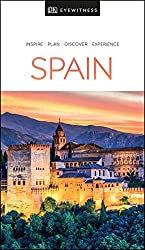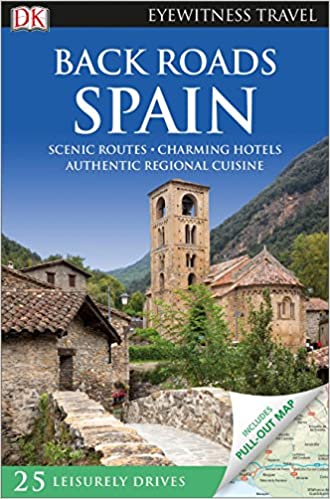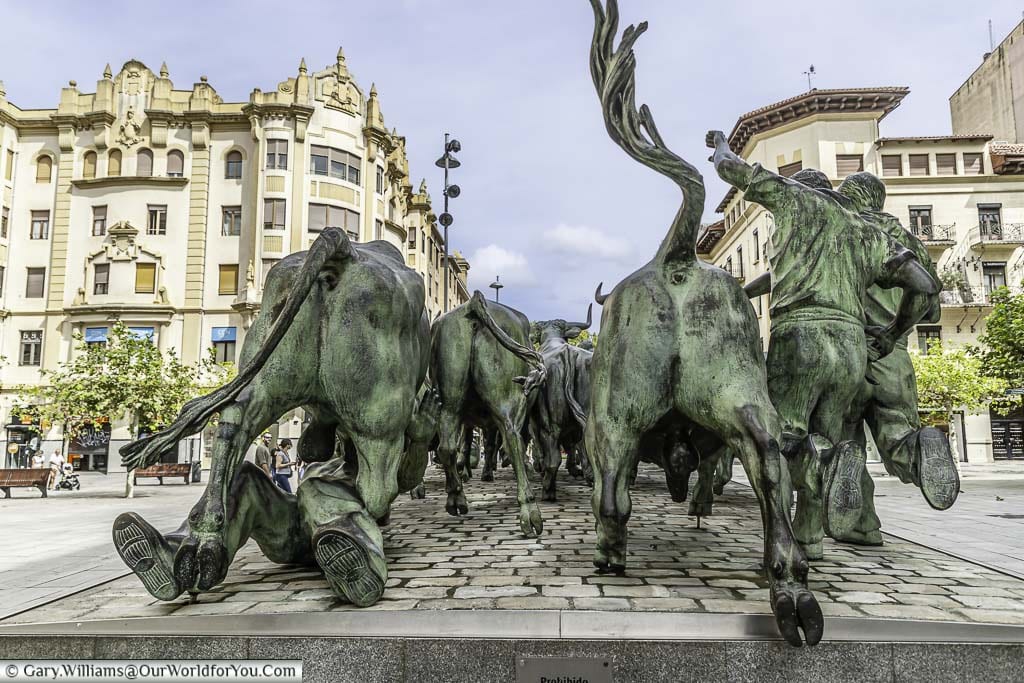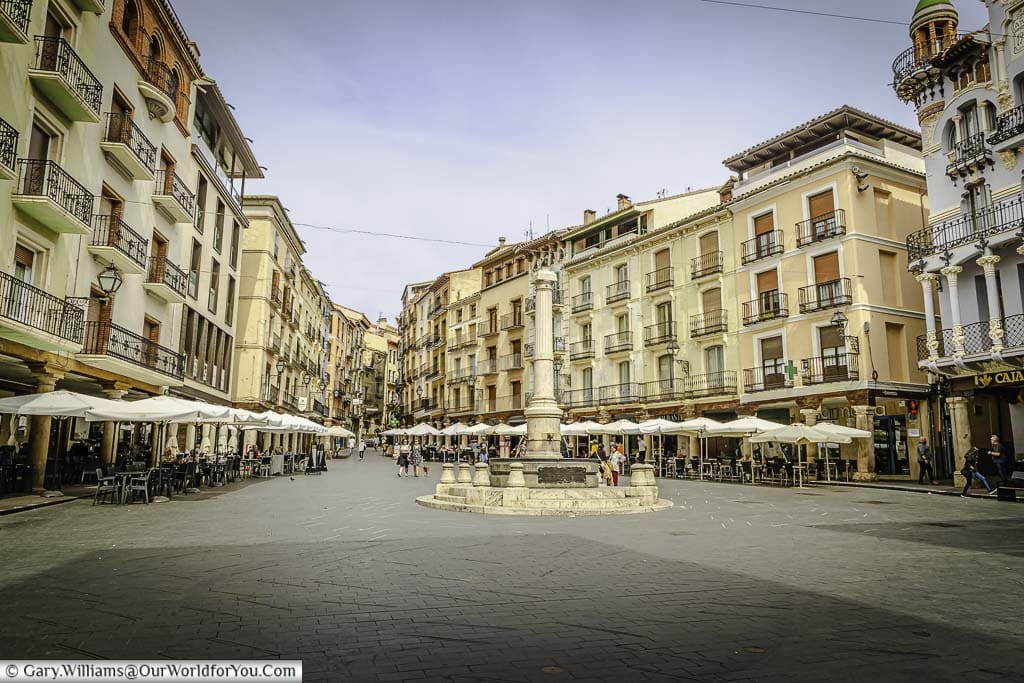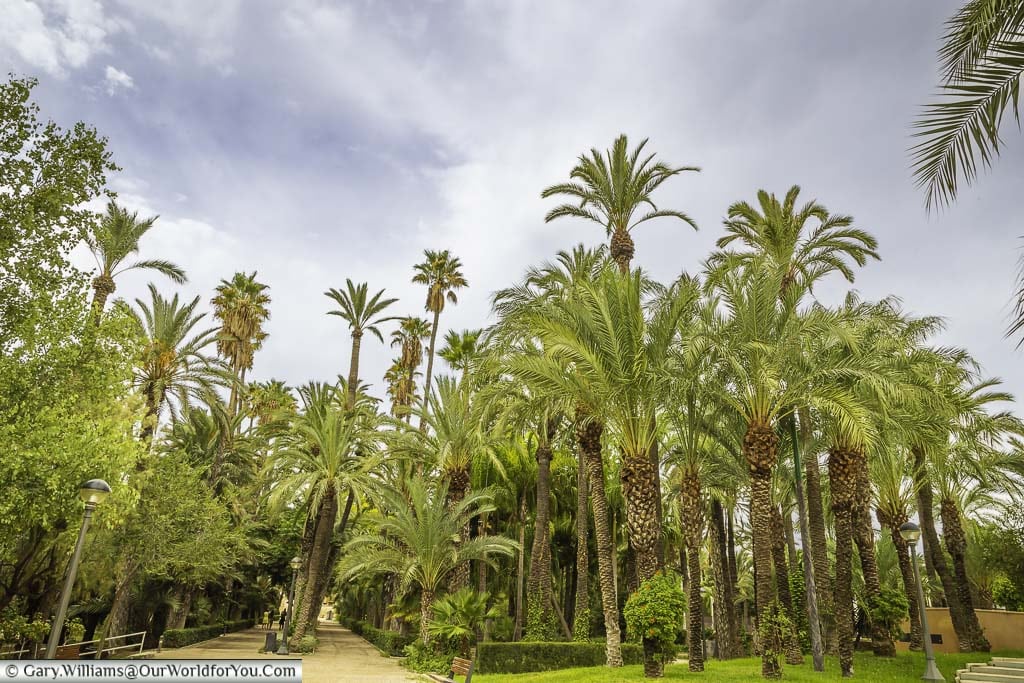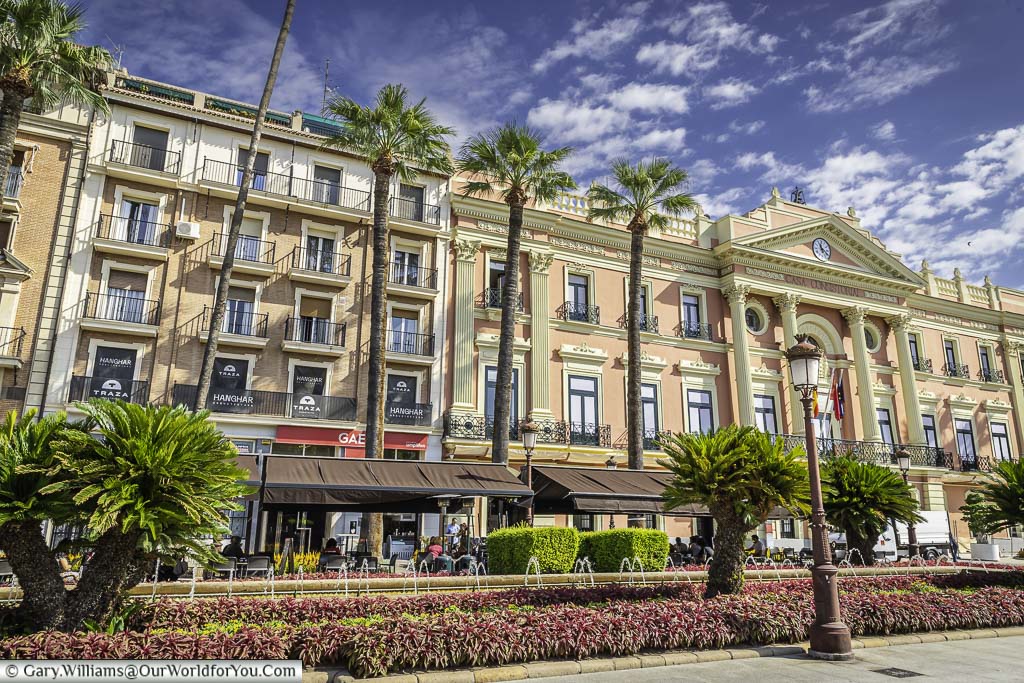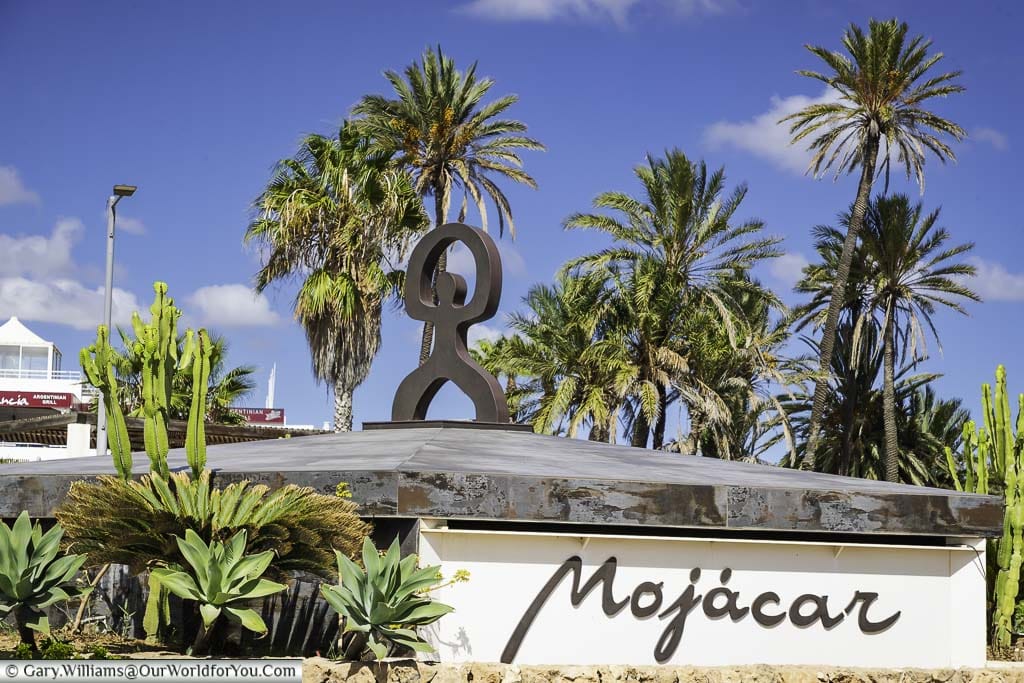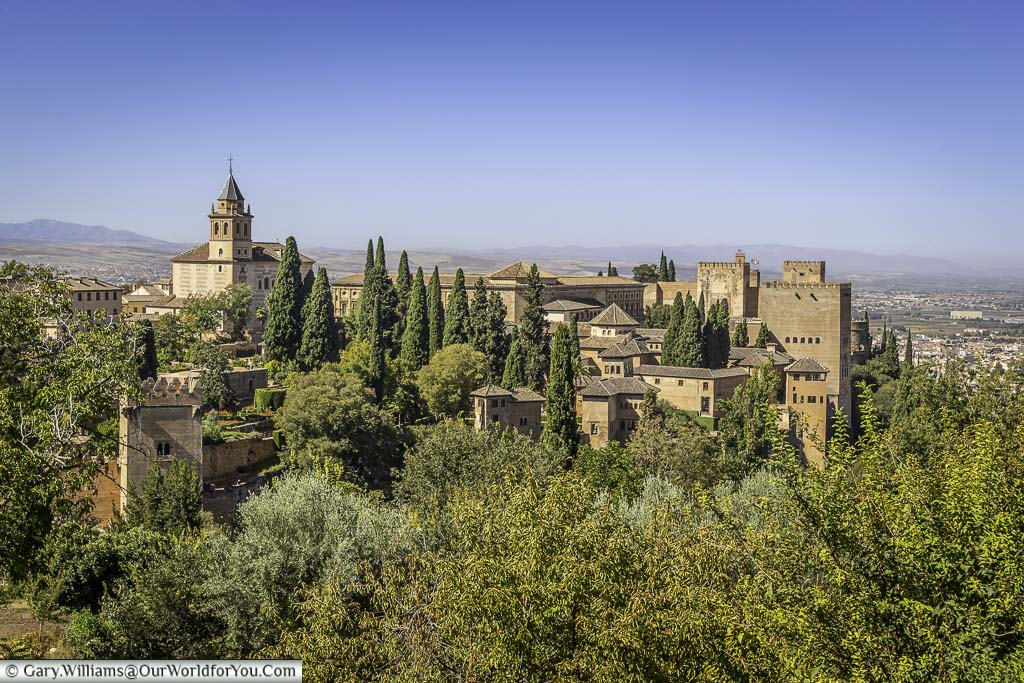Ancient history amongst the maze of lanes
During our road trip adventures around Spain, we stayed in the UNESCO World Heritage city of Toledo in Castilla-La Mancha. Toledo sits high above the Tagus River with an air of majestic grace waiting to be explored.
Our journey began in Bilbao, arriving from the UK on a Brittany Ferries; we have been touring down through the backroads of Spain. We’ve visited Pamplona, Zaragoza, Teruel, the Palm Tree Groves of Elche, Murcia, Cartagena, Mojácar, Granada and the pepper-pot windmills of Consuegra.
We have a couple of days to explore Toledo, and then we hit the road again and journey north and visit Valladolid, Astorga, and Burgos.
We previously visited Toledo during a Spanish road trip in 2014; however, our stopover was way too brief, and we didn’t give this historical city the time and attention it deserved.

So here we are again!
Did you catch our inspiration for this Spanish road trip?
Where is Toledo?
How to get to Toledo
- By air
Start creating your own Spanish adventure and discover the delightful city of Toledo for yourself.
The closest international airport is Madrid, search for your flights in one easy place with Booking.com and book your car rental all at the same time. This reliable travel search engine will scan for your favoured routes and chosen dates.
Where to stay in Toledo
The Hotel Medina de Toledo is a short stroll to Zocodover Square and many of Toledo’s significant sights, all with the assistance of the nearby escalator. It is a hilly city, after all.
The hotel has beautiful views from their terrace, where you can enjoy your breakfast. You are able to park on the street outside the hotel, or there is a public car park close by.
Pop your dates in the Booking.com search box and discover further options for all budgets.
Brief history of Toledo
The “City of Three Cultures”Toledo is only 45 miles (75km) southwest of Madrid and can be easily visited in a day; however, I urge you to stay for longer to discover its 2,000 years of history. It’s such a pleasure just meandering around its cobbled streets.
The magnificent city of Toledo is a delicious melting pot of three significant cultures. Christians, Muslims and Jews, and each has added their enriching influences throughout the centuries to this stunning hilltop city.

Toledo is an intriguing city to explore and one of the few places in Spain where you’ll discover a 10th century Mezquita, a Gothic Cathedral, and two Synagogues within a short stroll of each other.
Once an Imperial City, Toledo served as the main seat of the Imperial court for Charles V from 1525, and he resided in the city on many occasions.

Stay informed
Discovering the many gates of Toledo
Amongst its city wallsLet’s start by strolling through the ancient Toledo gates. There are many gateways dotted around Toledo’s historic city walls, which lead you into the ancient centre and are nestled amongst the imposing city walls and towers.
Toledo was first walled by the Romans; a few remains of the early wall can still be found today.

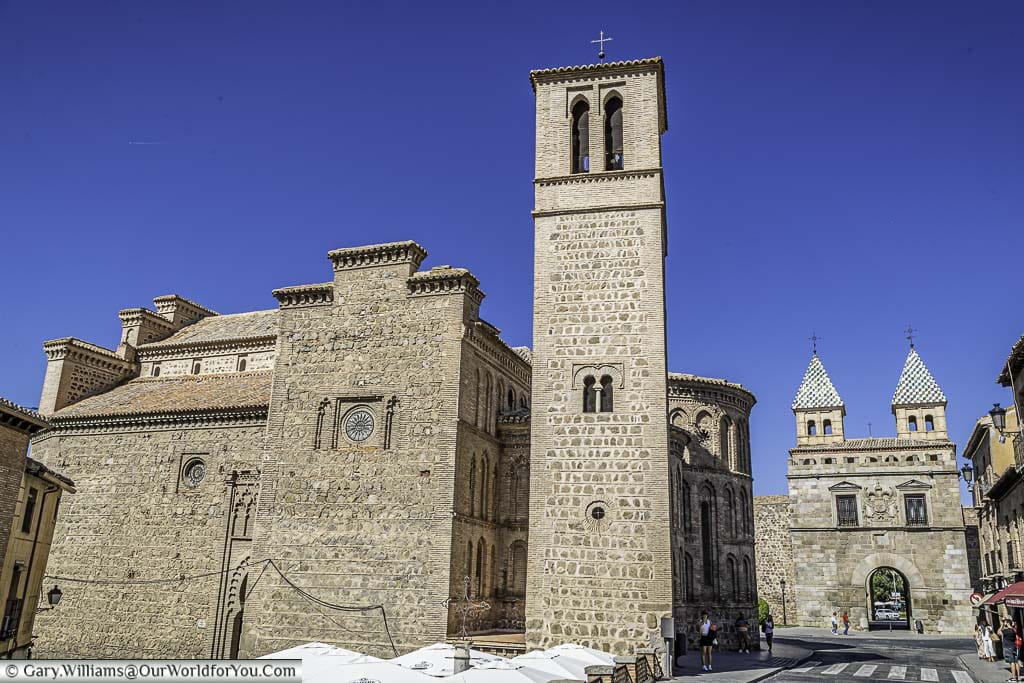


There are so many incredible places to discover in Spain and I love planning road trips. I often use the DK Eyewitness books, I find them extremely informative, easy to follow and the pictures and maps tempt you into searching for more.
We used a previous version of this book to plan our Spanish road trips, now you can grab the revised copy.
Exploring the ancient streets of Toledo
And Miradors to seek out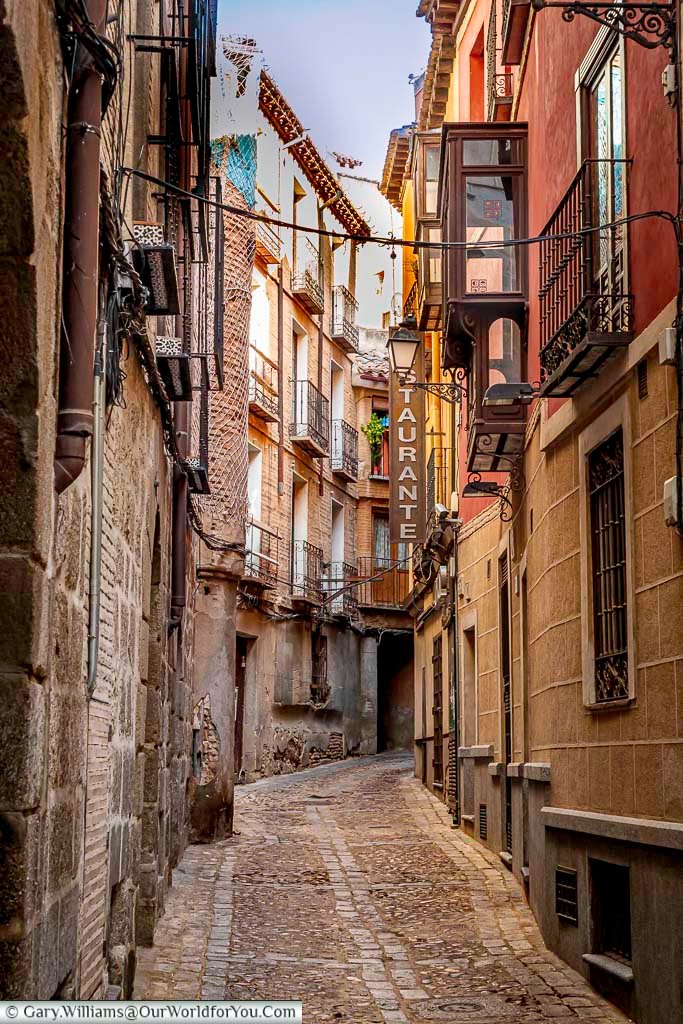




Tourist Information
Visiting the Alcázar of Toledo
Embracing Toledo Cathedral



The equally impressive Toledo Cathedral stands in the beating heart of the medieval city of Toledo and is an incredible example of Spanish Gothic art.
The site of this significant place of worship dates back centuries. Prior to the existence of the Christian church, which you see today, the Toledo Cathedral sits upon the ruins of a Muslim Mosque. Prior to the mosque, a 6th century church was built during the reign of the Visigoth King Recaredo.
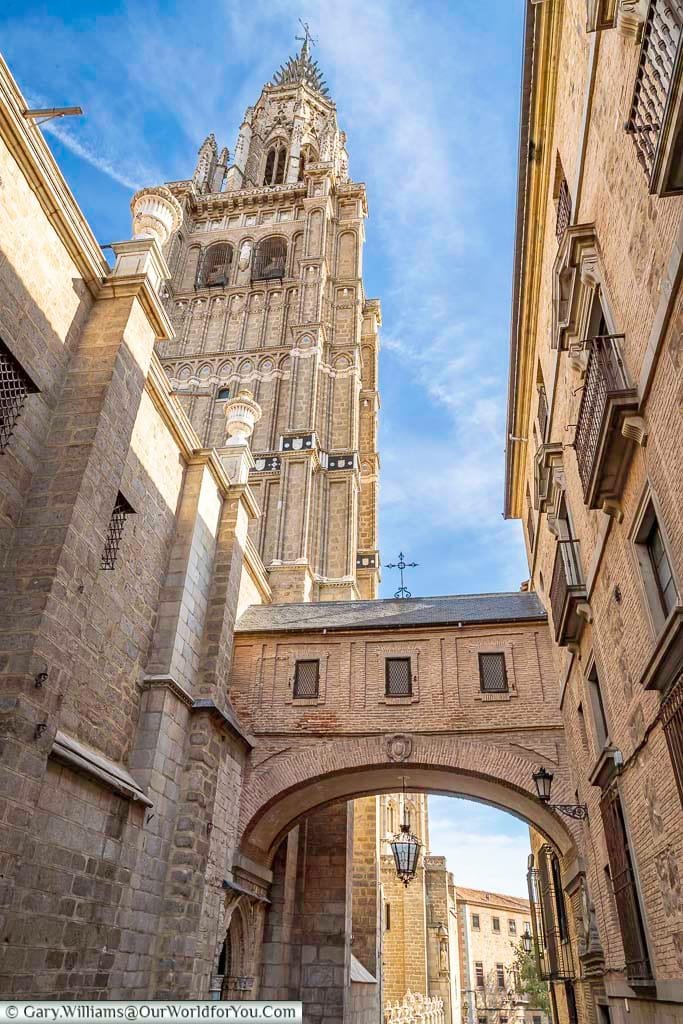

The cathedral is extraordinary inside; it is 390 feet (120 metres) in length and an incredible 194 feet (59 metres) wide; it houses five naves and fifteen stunning chapels.
The eye-catching gothic tower was constructed in 1422 by Alvar Martinez and incorporates decorative Mudéjar influences and stretches 301 feet (92 metres) high into the sky.
Tempted to?
Discover more of historic Spain and tour its picturesque countryside in the north, or head south to explore the Sierra Nevada National Park just south of Granada.
You can do it all on a road trip; Rental Cars searches multiple well-known car hire brands and discovers the deals that suit you the best.
Exploring Toledo’s Jewish Quarter
Strolling in the footsteps of history
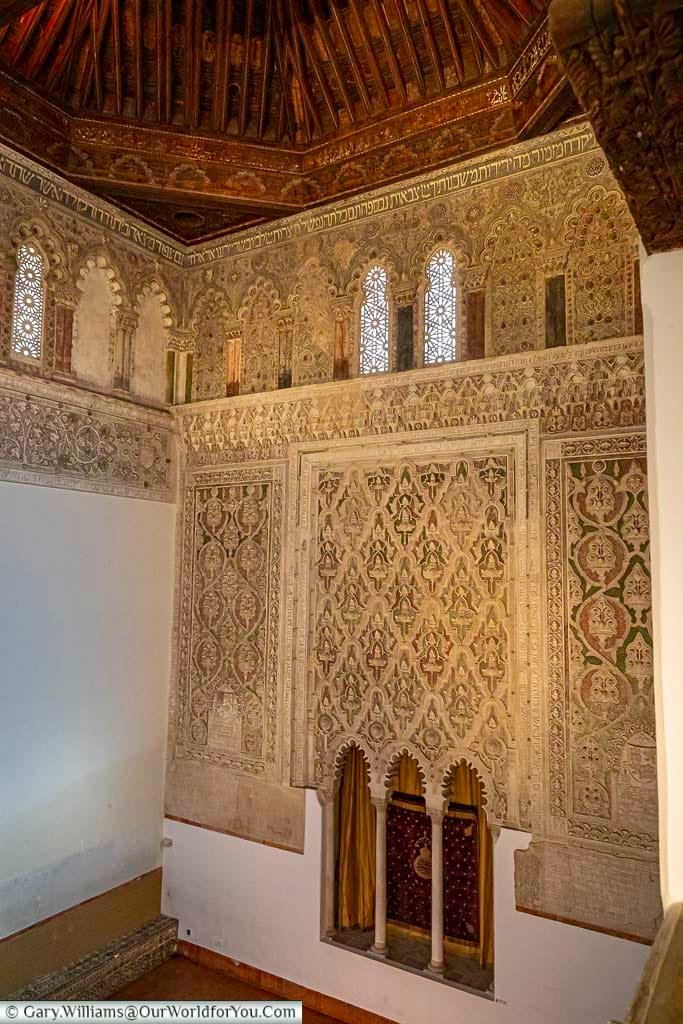

Just a short hop from here is the Synagogue of El Tránsito. This former synagogue was built in the 14th century and has fantastic examples of Spanish-Jewish art. It is adorned with beautiful Mudéjar detailing and inscriptions in Arabic and Hebrew.
The synagogue was converted to a Catholic church due to the expulsion of the Jews from Spain in 1492. It became a Sephardic Museum in 1910. It is magnificent inside and stunning specimens of Moorish architecture. The rectangular prayer hall has an Artesonado ceiling and a galleried second floor.
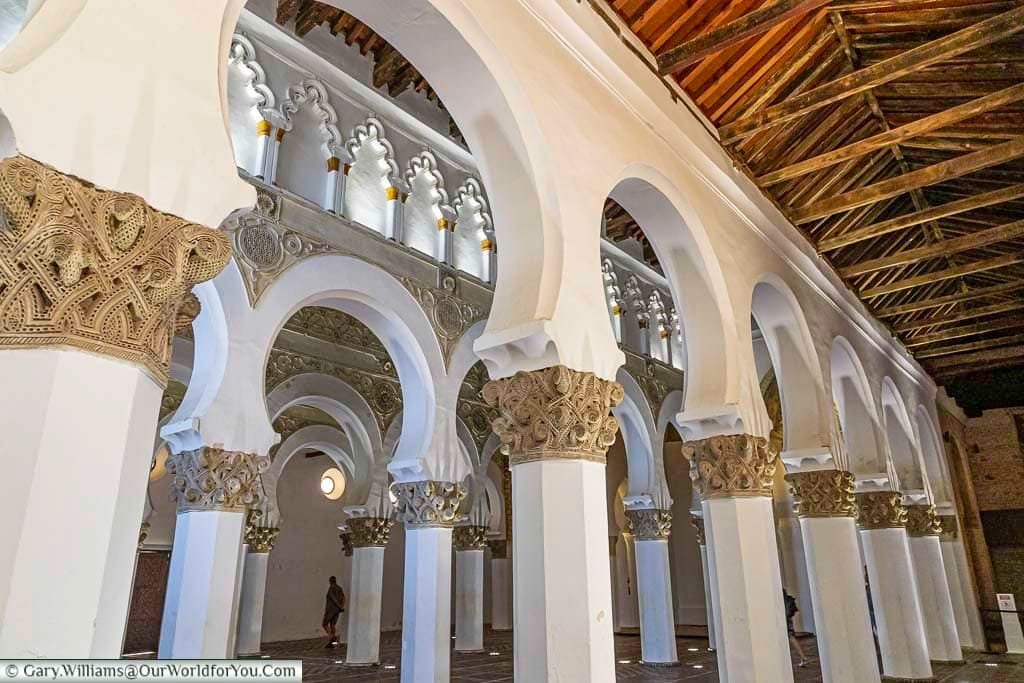
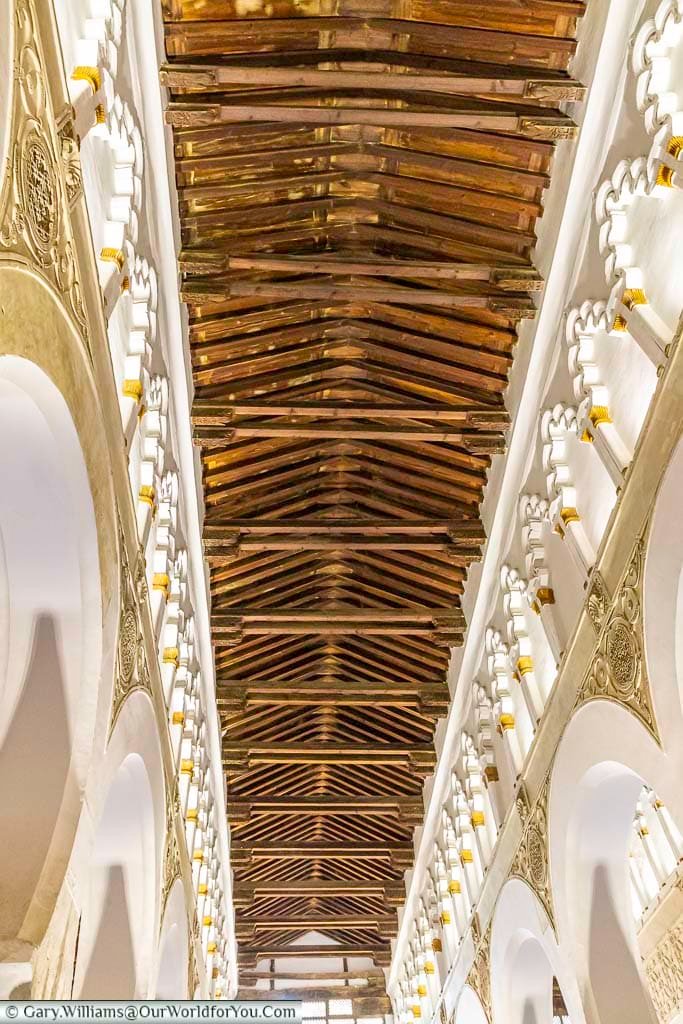

The Santa María La Blanca synagogue is the oldest in Toledo and, disputably, the oldest synagogue still standing in Europe. In the 15th century, it was converted into a church; however, today, it is a beautiful historic monument for all to visit.
Another delightful building to visit in Toledo’s Jewish Quarter is the Monastery of San Juan de los Reyes, with its enchanting cloisters.
There are so many incredible places to discover in Spain and I love planning road trips. I often use the DK Guides,
I find them extremely informative, easy to follow and the pictures and maps tempt you into searching for more
Visiting the Cristo de la Luz Mosque
Over a thousand years of history
The magnificent Cristo de la Luz Mosque, near the Puerta del Sol has some of the greatest examples of Spain’s Hispano-Islamic and Mudéjar architecture.
I loved visiting this mosque it truly had a feel of antiquity about it. The Cristo de la Luz Mosque was built in the year 999 and remains in a similar state as when it was originally constructed.
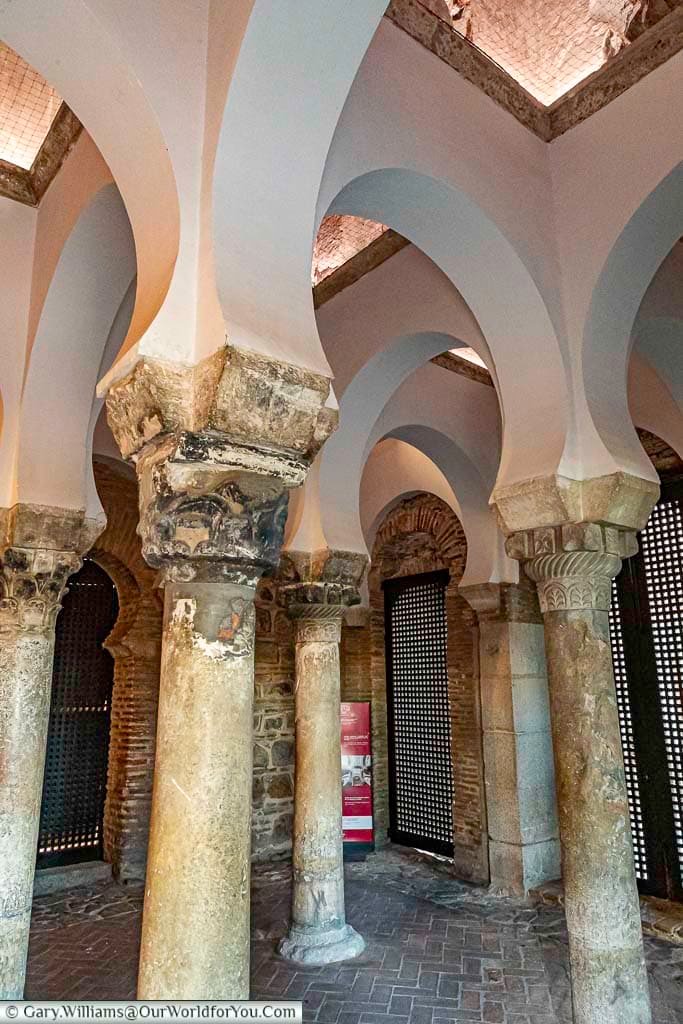

The Cristo de la Luz Mosque is relatively small in size and is a square structure measuring only 8 metres by 8 metres. The charming façade is made of brick and decorated with arches.
Step inside, and you’ll see the traditional-style horseshoe arches and the supporting pillars. The mosque was later extended on the east side when it was consecrated in the 12th century for Christian worship. The Mudéjar-style semi-circular apse was then added.

Why not check out...
* This post may contain links to affiliated sites where we earn a small commission at no additional charge to you.


